Stoves, Diet and Water Filtration on the Appalachian Trail: 2021 Thru-Hiker Survey
Each year here at The Trek, we ask long-distance hikers on the Appalachian Trail (AT) about the stoves and water filters they used on their 2021 Thru hike. This post will cover the cooking systems, resupply strategies and water filters used by this year’s survey respondents.
The Hiker Sample
Three hundred and ten hikers participated in the survey, all of whom section or thru-hiked the AT in 2021. Almost three-quarters were thru-hikers, and the rest were section hikers. For more details on the hiker demographics, check out our post with general information from the survey.
Water Treatment
We asked hikers how often they filtered water they took from natural sources.
The overwhelming majority (83%) of hikers always filtered their water. This is the highest number recorded through our AT survey, up from 78% in 2019. A further 13% did so for all sources except for springs, or most of the time. Only four hikers never filtered, while eight did so on occasion.
Water Treatment Type
Water treatment is commonly done via five methods:
- A filter that water is pushed through manually, making it ready to drink instantly (e.g. the Sawyer Squeeze). This is usually attached to a dirty water bottle or pouch.
- A pump that filters the water (e.g. the MSR MiniWorks). This requires no wait time.
- Liquid chemical treatments that take a few minutes to react before the water is safe to drink (e.g. Aquamira).
- Tablets that operate the same way (e.g. Aquatabs). Tablet treatments have been around longer than liquid treatments and, while small, are bulkier than liquid options.
- Devices inserted into the water bottle or bag that use UV rays to treat the water (e.g. the Steripen).
Sixty-six percent of hikers used a mid-size filter, down from 77% in 2019. Mid-size pumps made up the second most popular option at 22% of the responses, which is over-represented versus previous years. This could have been due to the way the questions in the survey were asked, so for future iterations of the survey, we will make sure this is clarified along with capturing the models of water treatment used.
READ NEXT – Katadyn BeFree vs. Platypus Quickdraw vs. Sawyer Squeeze
Tablets, liquid or UV filtration were used by a small minority of less than 6% of hikers which is about the same as 2019.
Waterborne Illness
Three percent of respondents (10) stated they contracted a waterborne illness during their trip. Interestingly, of the eight respondents who only treated water on occasion, 25% of those got sick, versus 2.3% of those who always filtered their water. That said, the sample size of those who occasionally or never filtered their water was very small (just 12 people total) so it is tough to draw any meaningful conclusions.
Other Illness
We asked respondents if they contracted Lyme disease during their trek. Thankfully, 98% of respondents did not, with six respondents saying they did. Over half of survey respondents said they treated their clothes with Permethrin, 30% checked themselves for ticks daily, and 14% said they did nothing to prevent tick bites.
.Resupply Strategy
Over two thirds of hikers resupplied every 4-5 days on average (210) with a further 20% resupplying every three days (62).
About 80% of hikers relied on purchasing food in town, with just seven percent using mail drops as their primary resupply strategy. For hikers with dietary requirements, the use of mail drops and combined approaches to resupply increased to about 25%—meaning the overwhelming majority continued to purchase food in town.
Eighty-four percent of respondents reported having no dietary requirements on the trail. Twenty-eight respondents (nine percent) reported being vegetarian, six reported being vegan, and seven gluten free. Four people reported allergies to common foods.
Cooking Preference / Stove Type
Over 86% of respondents used a canister fuel stove to cook food on the AT. 6.4% decided to carry no stove with them, opting instead to cold soak/eat raw foods. Alcohol, liquid and solid fuel stoves continue to dwindle in popularity as time goes on.
Top stoves used on the AT in 2022
Below are the top brands used by hikers on the AT.
MSR (136)
Jetboil
Snow Peak (12)
BRS (11)
Summary
The majority of hikers filtered their water at every source using a medium sized filter like the Sawyer Squeeze. Only 3.2% of those surveyed reported any water borne illnesses. The number of people who contracted Lyme was also low (<2%) although only 87% of hikers reported taking precautions like using permethrin or checking for ticks daily.
Hikers typically resupplied every four or five days and even those with dietary requirements primarily used towns to resupply rather than relying on mail drops, with 80% of hikers using this method.
Eighty-six percent of hikers used a fuel canister stove to cook, with just 6.4% opting to go stoveless. The MSR PocketRocket continues to be the most popular stove with 136 respondents using it. This was followed by the Jetboil Flash (21) and the Snow Peak LiteMax (9).
Conclusion
Many thanks to the hikers who participated in the survey! Congratulations to you all! To stay updated on the subsequent hiker survey posts, subscribe to The Trek newsletter.
Read Next
Data Caveat
Data were collected from participants recruited via our social media platforms, Backpacker Radio, and TheTrek.co. Participants submitted surveys anonymously between October and November of 2021. There was some data cleanup done during the analysis of the data where obvious spelling mistakes were made or brands/models were obviously the same. We also changed any start dates that referenced 2022 to 2021 and couldn’t find any obvious duplicates in the data. That said, please keep in mind you can’t always believe the answers to what you ask strangers on the internet.
Featured image: Graphic design by Chris Helm (@chris.helm).
This website contains affiliate links, which means The Trek may receive a percentage of any product or service you purchase using the links in the articles or advertisements. The buyer pays the same price as they would otherwise, and your purchase helps to support The Trek's ongoing goal to serve you quality backpacking advice and information. Thanks for your support!
To learn more, please visit the About This Site page.

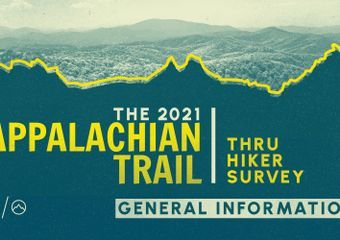











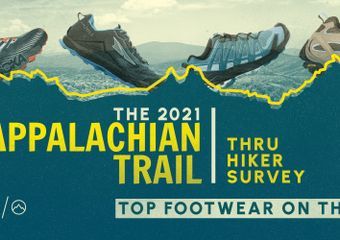
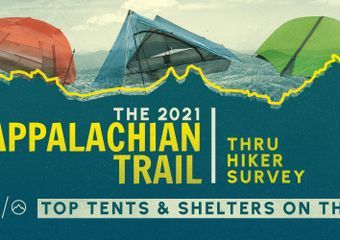
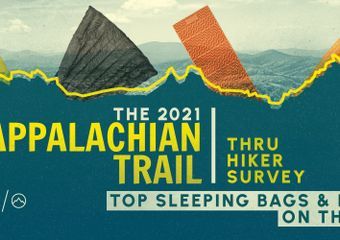
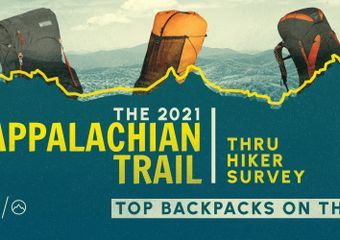

Comments 1
You skipped the type of filter. My wife and I started and finished the Appalachian Trail with Sawyer filters. First a mini (which was too slow) and then a micro which we generally used in gravity filter mode.
About 1,500 miles in to the PCT we switched to a BeFree. I know it is a disposable filter with a limited lifespan. But. It is so fast to use and it cleans so easily, I’m willing to pay the increased cost per liter.
I carry chemicals for a back-up but I may well leave them behind in the future.